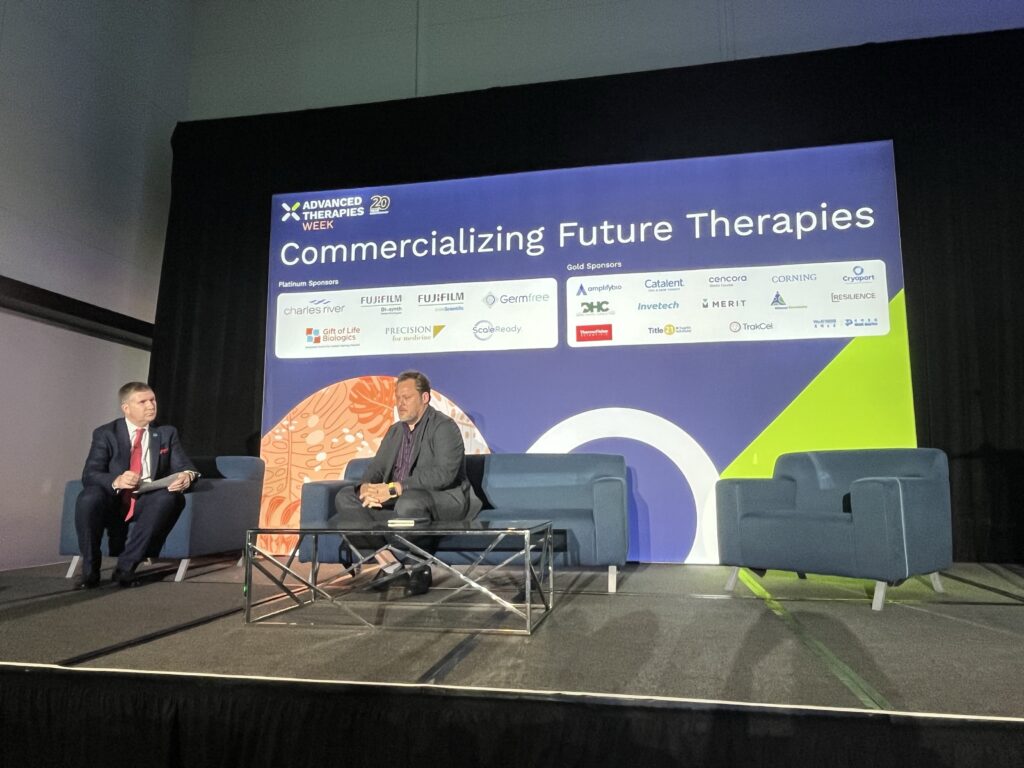An abridged transcript of the fireside chat from January 17th, 2024, at Advanced Therapies week in Miami, Florida with J. Kelly Ganjei, CEO AmplifyBio.
Moderator: What led you to the strategy for building Amplify Bío that includes advanced characterization services, safety and tox preclinical services, and manufacturing in an unconventional model that allows for the client to drive staffing model and technology platform used in a concierge partnership for advanced therapy manufacturing?
J. Kelly Ganjei: In my past life as CEO of a traditional CDMO, my experience was that clients would often come to us and show us only quick glances or high-level details of their ‘secret sauce’ during the tech transfer process. The client’s perspective was that they wanted just instead to come and show us how it’s done. Then we’d be halfway through comparability runs and find that the products aren’t the same. We would have the individual scientists who had been making products that went into the first ten patients come in and observe our process and say, “Well, you guys should have added reagent X at this step”, and we would have to show them it wasn’t in their technology transfer SOP. Those are among the type of technical challenges we saw, with relatively painful tech transfer processes and scale-up over time that drove us to want to get more technically involved with clients earlier in their development. I’ve been in the cell and gene therapy field since the early 2000s, and the thing I most want to impress on developers new to the space is to think about commercialization at a much earlier stage than they have been historically. People say, “Start with the end in mind,” but that can mean many different things. In the last year, many companies have failed, so let’s come at this with a commercial mindset and think about some of the challenges you will encounter while you are still in the R&D phase. Investors appreciate this as a mature and very sophisticated way of thinking for early-stage companies. This, unfortunately, comes from experience when their portfolio companies consistently say they have technical challenges and many from a commercial scale perspective. You also don’t want to be sitting in front of a regulatory agency ready for commercial approval, and the agency said, “Well, you’ve made five different products over three clinical phases as defined by your product characteristics.” That’s a disaster. It’s a disaster for everybody, and particularly for patients. We have seen cases where there have been products made thirteen years ago for patients who were given four months to live, and those patients are still alive, but some of those products are still working on approvals through the agency because of inconsistencies in comparability assays or potency characterization. I’m not trying to criticize how we got here, but the reality is that for many years, we’ve been talking about the “process is the product,” and that mindset did change the focus from what is the product to how the product is made, so naturally, that defocuses characterization. I am just saying that today, we have the sophistication to get back to a product mindset, and we can really focus on the critical product attributes and remarry R&D to CMC in the type of relationship that has existed for years in small molecules. Taking this full circle to where we are at AmplifyBio, now you know one of the challenges of being at a CDMO was not just that challenging tech transfer process; among other things, it was a humongous decision for people. I mean, the sales process alone, when you’re on the CDMO side evaluating partners even after you get past the RFP stage, is, laborious, flying in doing the audits, getting to know people in a process that is six to nine to sometimes even eighteen months and that’s a long time to figure out who is the right partner. I’ve sat on multiple sides of the table. I have been a drug developer and an investor as well, so I understand how stressful it is to put the possibility of success in someone else’s hands.
In building AmplifyBio, we wanted to provide not just capacity but the right capacity, and we focused on the creation of an environment where you can utilize SME’s resources and technology; essentially a sandbox environment to focus on commercialization early… including safety, efficacy, and toxicology, all the way through pilot lots and commercial manufacturing is what we’re building. That’s the short version.
Moderator: Over the last several years, many companies have suggested that we build everything ourselves and our manufacturing facilities because no one else can make our product as well as we can. Never mind that it was only being made on an academic scale, but now things have changed. Some people are now saying they are going to outsource everything. Finance groups are halfway between the two, saying we won’t pay for you to build excessive infrastructure. How do you work with clients on that decision and reach a compromise?
J. Kelly Ganjei: From our perspective, phone calls have been coming in recently, “Would you like to buy our capacity?” People tell us, “We built this wonderful state-of-the-art facility that was purpose-built for this product. Would you like to turn it into a CDMO?” So, we’ve seen the results of people who’ve built capacity too early and are selling it for pennies on the dollar. When thinking about where we wanted to play in this market, after spending time evaluating the current state, we believe three models can operate simultaneously in one facility. We have some clients that come in and say we have no desire ever to do any manufacturing, others that want to work with you hand in hand on the tech transfer process, and then others that want to hand it off and say, here you go, and that’s more closely aligned with the traditional CDMO model. We’ve got others that say, you know, we are the experts, and we’re still trying to figure out what we’re doing back there, and we need to bring in our manufacturing staff, and so we said that’s great. Hoteling is not a novel model, and I won’t say anything negative about others providing this, but there are missing pieces. We deliver more central offerings that are more of a concierge-level service with a lot of support.
We mentioned the sandbox before that enables our clients to find the right technology and characterization platforms, and again, we are going back to the cost of some of this. I don’t advise going with the cheapest model; I advise evaluating and going with the most cost-effective model because sometimes you get what you pay for, and you many times the cheapest model won’t get you to the right milestone. You may have an excellent report, and it ticked off the box. Still, it’s not informing you about the biology of the science or the immunology of your product or, in any way, shape, or form, the commercial potential of your product. In that hybrid model between CDMO and hoteling, we also have the in-between where both parties roll up their sleeves, get in there, and come together utilizing our tech sandbox environment. I keep saying sandbox, and in our world, how I define that this way: that maybe someone doesn’t know yet the platform they want to use for cell processing, if they want to use Prodigy or they want to use Sefia, or they want to try five or six different platforms or use G-Rex or something else like the HYPERStack, well let’s actually evaluate what the process is and let’s evaluate the clinical indication. Let’s look at your scale model. Let’s ensure that the 10% of the market you want to penetrate on day one doesn’t require a 4,000,000-square-foot building with 36,000 people operating. Let’s look at process efficiencies, and from our perspective, when we’re helping, we’re in that sandbox with clients in either the hoteling model or that roll up our sleeves model where we’re looking at and trying to establish capital efficiency for people, I think it’s a much more capital efficient way of managing the process where you retain control. You still manage your own tech transfer, but you can leverage our experts across the different and diverse set of platforms by testing.
When AmplifyBio had your announcement, you mentioned this concept of hoteling and hybrid approaches. Most of us are used to the either-or approach that is fully hoteling or fully CDMO, but in each of your three staff models, there is somewhere in the middle. Please give us more detail about why it’s the direction AmpliyBio is going.
J. Kelly Ganjei: Again, in these types of scenarios where clients are coming in, and they’re utilizing a capital-efficient model trying to manage themselves, they’re not going to go out and purchase five different platforms to test and see which one is better. Through an acquisition we made and other investments, we have access to many of these technology platforms, so we can say, “Sure, you can try this one, this one, and this one, and we can see which one is better for you.” We have the ability, and it’s in our business model, to acquire additional platforms and continue bringing technology experts to our team. In San Francisco, we brought on, through an acquisition, a team of people making three individually distinct products for patients. It was a neoantigen TCR with a non-viral gene editing component in the manufacturing. Those experts are sitting at the table with us, and an experienced team that has been with me for many years and participated from early-stage manufacturing through PAI readiness, so we have a commercial mindset early in technology development. We can sit around the table and innovate instead of saying, “Here’s a set of keys, and we’ll provide some management and quality oversight to help you release in our supply chain and signoffs.” From a cultural perspective, our team focuses on care and attention and is quite patient-focused. That drives us to bring our A-game to the table and innovate with the client wherever possible.
Tell us a little bit about if you have a client that then comes in and they want to. They haven’t figured out their process yet and want to learn. Can they have their staff come in and work with you, ankle-deep in cells, and learn?
J. Kelly Ganjei: In our San Francisco facility, we not only have hoteling where people can come in and manufacture products but also have bench and office space. It’s a nice environment where we can host, and in fact, we hosted a very large number of employees from one of our clients recently, which can be a short stay or years; we are flexible with that. We’ve replicated that in the new facility that just opened, AMEC. There, we have a dedicated manufacturing space where people come in and bring their staff, and we can support anywhere from if a client says they want to send their manufacturing folks, just the three people who have made this product since inception. They’re coming in, going to make it, and that’s what we want. That’s fine; AmplifyBio can provide support for manufacturing, we can provide support for QC, QA, supply chain, etc., and we can offer concierge service around the entire manufacturing platform. If somebody says, “We want to come in, and we want to have full manufacturing control, and we want to bring our own QC staff because we feel it’s complicated what we’re trying to do, and we don’t know yet exactly what our assays look like.”, we have that type of capacity as well. That’s what makes me so excited about this model. Companies have real flexibility as to how they move forward with us. That’s particularly valuable when capital is constrained.


